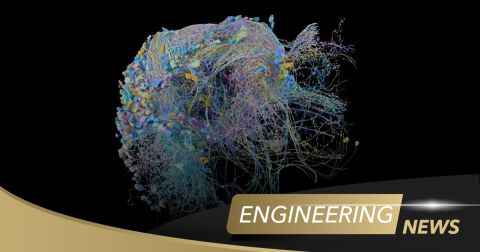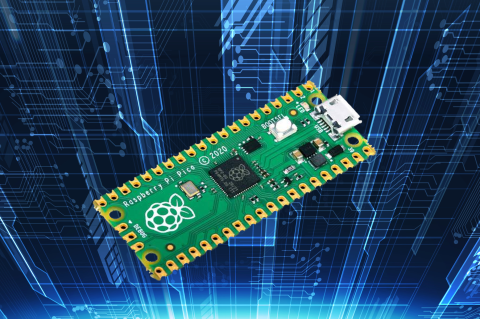GaN MMIC Power Amplifier Market Outlook and Applications

The next smartphone you buy is likely to include a GaN MMIC power amplifier for wireless communication. What was formerly relegated to academia is now seeing fast commercialization. These developments aren’t limited to smartphones, although this is expected to account for a significant portion of the growing RF components market. High frequency radar in automotive, aerospace, and even robotics is expected to be a significant driver of further GaN MMIC adoption. As a related area requiring semiconductors with high thermal conductivity and breakdown voltage, GaN-SiC and 4H-SiC amplifiers are expected to see copious use in the renewable energy sector.
The proof is in the market data. According to the latest market data from the Global mobile Suppliers Association (GSA), over 67% of all 5G devices support sub-6 GHz spectrum bands and just over 34% support mmWave wireless communication. More than 27% of all announced devices support both mmWave and sub-6 GHz wireless communication. As more devices push into the mmWave range, and cooling methods for these products become more innovative, recent estimates place the global amplifier market value from $1.6B to $3B by 2023. GaN is projected to account for 43% of this total market share.
With all the excitement around these components, it’s a good time to be an RF, mobile, radar, or power conversion designer. If you’re looking for ways to innovate, then read on to see where growth is coming next and why GaN MMICs are critical for these applications.
Why the GaN MMIC Power Amplifier Excitement?
GaN is an ideal semiconductor for high electron mobility transistors (HEMT), alongside GaAs and bulk silicon. The important differences between GaN for RF applications and Si or GaAs become clear when their material properties are compared. A brief comparison is shown in the table below.
|
|
|
|
|
|
|
|
|
|
|
|
|
|
|
|
|
|
|
|
|
|
|
|
|
|
|
|
|
|
The real advantage for RF power electronics arises in two ways. First, the mobility of Si in the bulk layer is larger than in the inversion layer, yet the opposite case is observed in GaN. This means GaN has lower resistance in the ON state, which is a crucial metric for transistor efficiency. Second, it has a higher breakdown threshold thanks to its wider bandgap. If the integrated photonics world ever becomes commercialized for use at UV wavelengths, GaN is a prime semiconductor for UV EPICs.
Although the thermal conductivities of GaN and Si are similar, GaN can tolerate a much higher operating temperature. GaN can also be grown on an SiC substrate rather than on its own. The thermal conductivity of 4H-SiC is 490 W/m•K, which provides a nicely integrated heat sink for GaN-SiC MOSFETs running at high frequency with high power output. All these qualities are driving foundry technology and design of GaN MMIC power amplifier devices for a number of applications.
Promising Applications for GaN Power Amplifiers
Following are some of the budding applications for GaN power amplifiers.
Amplifiers for Telecom
The proliferation of LTE wireless networks is a primary growth factor that has pushed the GaN amplifier market. 5G rollouts will see greater use of GaN/GaN-SiC amplifiers in wireless backhaul and base stations, accounting for 50% of market growth in this area. For board designers, GaN/GaN-SiC amplifiers will be an ideal choice as these components require less on-board and off-board cooling equipment.
Automotive, Defense, and Aerospace
The primary high frequency application in this area is radar in the W-band (for automotive) and NATO’s M-band (for aerospace/defense). GaN devices can support the required higher frequencies thanks to their flat dispersion/output capacitance. Radar at frequencies ranging up to the W-band will require moving away from GaAs devices. The higher useful voltage in GaN devices also provides higher power output compared to GaAs, which allows longer range.
GaN devices are an excellent choice for long-range automotive radar signal chains running at ~77 GHz. As component costs go down through greater foundry capacity and increased competition, so will the cost of radar modules for these applications. The proliferation of integrated transceiver modules and SoCs for automotive radar is also providing smaller footprints for new products.

Power Conversion for Alternative Energy
Although not a high frequency application, efficient power conversion at high voltage with long reliability requires devices that can withstand high temperatures and dissipate heat quickly. GaN-Si and GaN-SiC nicely fit the bill, although the higher thermal conductivity of SiC substrates favors GaN-SiC for high voltage/high power applications. Newer GaN power amplifiers are enabling power conversion in three-phase industrial, power distribution/conversion, and automotive electronics up to the kV range.
With greater commercialization and demand in these new areas, designers need to know what components are available for new products. You can head on over to Octopart to find your next GaN MMIC power amplifier, and you can quickly import design data for your components into Altium Designer.
The manufacturer part search and circuit simulation features in Altium Designer® are ideal for innovators working in these intense new areas. Layout engineers will have access to a complete set of tools for stackup design, impedance control, and much more. Now you can download a free trial of Altium Designer and learn more about the industry’s best layout, simulation, and production planning tools. Talk to an Altium expert today to learn more.











